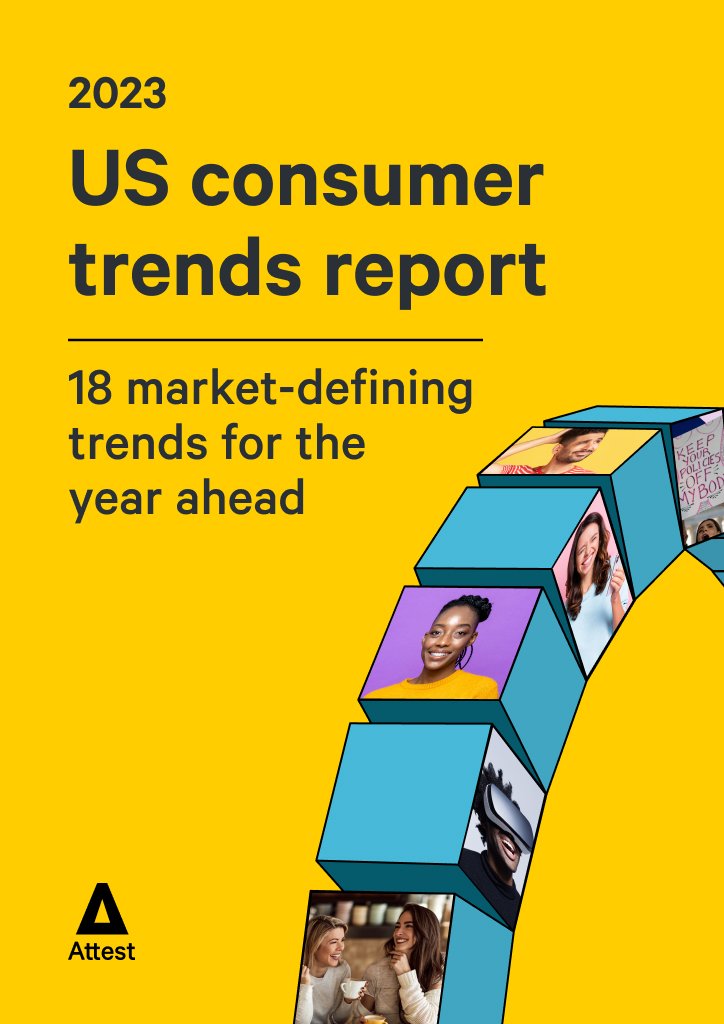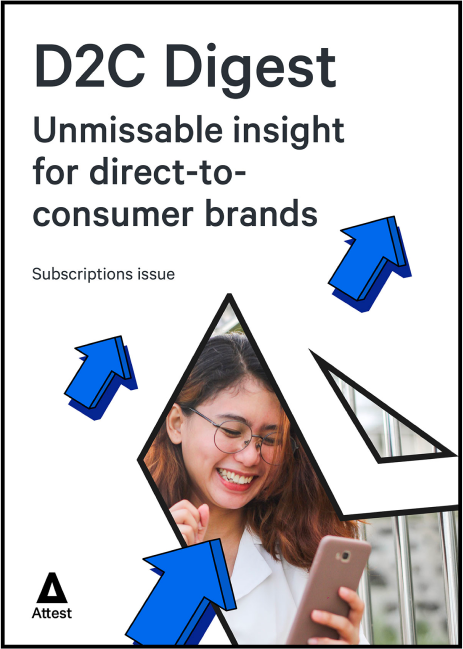Why subscribers cancel—and how to win them back

Getting customers signed up to D2C brands is only half the battle, but gets most of the attention. What about the flipside of the coin? What about customers who unsubscribe or cancel? What can brands do to bring them back on board?
To find out, we surveyed consumers on both sides of the Atlantic. We focused on respondents who’d either subscribed to a D2C brand in the past but canceled, or never subscribed at all.
Read our full summary of the results below, but if you’d like to get stuck into the data yourself then feel free to fire up our insights dashboard.
Top 3 takeaways from the research
1) The number one reason for canceled subscriptions is expense and value for money—62.8% in the US and 68.8% in the UK said this. This shows that brands need to think hard about what the right price point is, how value is communicated and how consumers perceive value-for-money.
2) Consumers want to get something for free when signing up to a D2C subscription service but are realistic in their demands—44.2% of Americans would prefer 1-3 months free, while only 25.8% want 4-6 months free. Brands should be careful not to be under- or (more importantly) over-generous.
3) A significant number (34.7% in the US and 30.8% in the UK) give up subscriptions as they feel they no longer need or want the items they receive. This shows brands must sell to the right customers with the right mutual expectations, not just any customers.
Results
It’s all about value-for-money
When asked what the most important factor was in considering a new D2C subscription the top answer was ‘lower prices’, selected by 48.1% of US respondents and 50.5% of respondents in the UK.
The same answer also came out top in the list of factors that would convince respondents to re-subscribe to a service they had previously canceled (50.8% in the US vs 55.9% in the UK).
And if you needed any more persuading that price point is the key factor, the top reason given for canceling in both territories was expense—cited by 62.8% in the US and 68.8% in the UK. Remember: price is both a push and a pull factor.
My suggestion? Ask your target audience how much they would be prepared to pay for your product or service, and how they reach that decision (therefore uncovering how consumers think about value-for-money, which is therefore precisely how brands should think about value-for-money). That should help you find the magic number quickly, based on knowing the ‘why’ behind consumer decisions.
Don’t give everything away for free
Free or cheaper delivery was also a popular answer among potential subscribers, but what I found most interesting was that consumers don’t necessarily want too much for free.
When given the option of ‘1-3 months of free products’, ‘4-6 months of free products’, or ‘6+ months of free products’, the 1-3 months answer was most popular for both US and UK respondents. This was true of both first-time subscribers and re-subscribers. Surely that’s ridiculous, right?!
[screenshot of US vs UK answers for Q2 and Q4, focusing on the ‘free product’ selections]
There’s obviously a sweet spot for brands to find here—a free gift or introductory offer will certainly appeal to consumers, but there’s no need to destroy profit margins by giving too much away. Consumers actually don’t want or trust huge amounts of ‘free’. Phrases like “Why are they just giving this away?” and idioms like “No such thing as a free lunch!” come into play.
Consumers see through marketing tactics, and prefer mutual value exchange over ‘just free value’. So you really can put customers off by giving them too much for nothing. Would you accept heavily discounted or free sushi? …that’s the effect at play here.
It also shows that customers recognise the value of the free gifts they receive, which brings me to my next point. One of the most common reasons for canceling subscriptions was cited as ‘didn’t need/want the products any more’—30.8% of UK respondents and 34.7% of US respondents said this.
Brands might not think this is something they can do much about, but perhaps it shows that there is an ongoing educational aspect required by subscription brands. Pertinent reminders of the value of subscription products could help cut unsubscriber numbers down significantly.
Acquiring new customers is expensive, and if individuals cancel or churn inside their CAC (customer acquisition cost) payback period (how long a customer relationship is required to break-even on that CAC), then all of the marketing, branding, product and shipping effort was wasted.
Very simply, many D2C companies can do an even better job at precluding churn and saving costs, by focusing on customers that really need their products (and are therefore less likely to churn).
Clearly, there needs to be room for experimentation that unlocks new consumer groups and growth, but that experimentation needs to be accurate, measured and contained. As ever, understanding what consumers really want—which groups are more/less likely to love and need your product, and getting inside the root causes of winning/losing with each demographic—that’s the key to success.
There’s also the ethical point here around not encouraging people to become customers when they don’t truly want or need what you offer. While your ‘total subs’ numbers might sound impressive, why isn’t customer retention your most important metric?
Wait! Come back!
One particularly fascinating insight cropped up in the question about what brands could do to stop subscriptions being canceled. Pricing and free products scored highly, but it seems customers also want to feel like the brands they subscribe to actually listen to them.
On both sides of the pond, a significant number of respondents (12.2% UK vs 13.0% US) said that brands could have stopped them unsubscribing by speaking with them to make sure their concerns were addressed. You should never underestimate the power of having a direct conversation with your customers.
Interestingly, this tactic is more likely to be well received by males than females in the UK—15.5% of men said it would persuade them compared to 9.7% of women—while in the US this response resonates equally well with both genders.
I recently moved from one pasta subscription box (Nonna Tonda), to another (Pasta Evangelists), simply to compare the experiences. Nonna Tonda asked for feedback, and patiently waited for me to come back. Pasta Evangelists (Barilla) never asked, and didn’t know what was happening (or perhaps their analytics are so accurate, that they can just assume!).
The two differences in approaches were noticeable; Nonna Tonda knew the story of the cancellation, and believed that their product head-to-head would win me back (it did… no special offer or ‘churn avoidance’ intervention required!).
Of course, another great way to speak directly to your target customers is by using the Attest platform. You can find out more about this survey through our insights dashboard (US & UK), and if you want to know more about how Attest can help you use data to make great decisions, get in touch!
And the D2C insights don’t stop here! In our recent D2C Digest: Subscriptions issue you’ll learn about the demographics and categories with the biggest growth potential, what consumers want from subscription brands and hear from top brands with great D2C success stories.
Tell us what you think of this article by leaving a comment on LinkedIn.
Or share it on:


